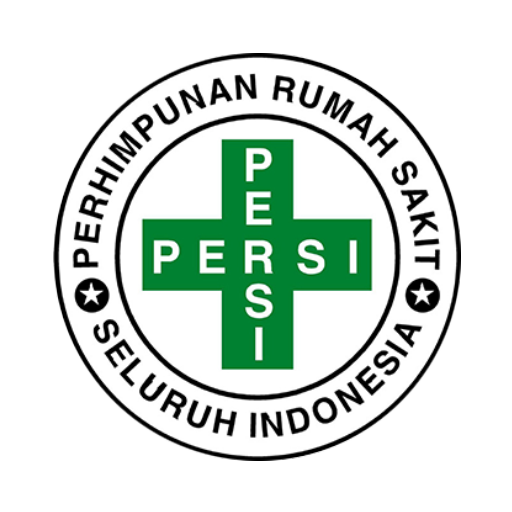Analisis Implementasi Kebijakan Dokter Spesialis Jaga On Site Di Instalasi Gawat Darurat Rumah Sakit Dr. Mohammad Hoesin Palembang
Abstract
Keywords
Full Text:
PDFReferences
(1) Adikoesoemo S. 2012. Manajemen Rumah Sakit. Penerbit Pustaka Sinar Harapan. Jakarta.
(2) Alakeson V, Pande N, LudwigM. 2014. Analysis & Commentary a Plan to Reduce Emergency Room ‘Boarding’ Of Psychiatric Patients, Health Affairs.
(3) Al-Shaqsi SZK. 2010. Response Time as a Sole Performance Indicator in EMS: Pitfalls and Solutions. Open Access Emergency Medicine, 2:1-6.
(4) Ardagh MW, et al. 2002. Effect of a Rapid Assessment Clinic on The Waiting Time to be Seen by a Doctor and The Time Spent in The Department, for Patients Presenting to an Urban Emergency Department: a Controlled Prospective Trial. NZMJ, 115:1157.
(5) Ayuningtyas D. 2014. Kebijakan Kesehatan: Prinsip dan Praktik.Cetakan ke-1. PT. Rajagrafindo Persada, Jakarta.
(6) Azwar A. 2010. Pengantar Administrasi Kesehatan. Edisi Ketiga. PT Binarupa Aksara, Jakarta.
(7) Carrus B, Corbett S, Khandwelwal D. A Hospital-Wide Strategy for Fixing Emergency-Department Overcrowding. Website: http://www.mckinsey.com/insights/health_systems_and_services/a_hospital-wide_strategy_for_fixing_emergency-department_overcrowding, 2010. Diunduh 7 Maret 2014.
(8) Cheng I, et al. 2013. Implementing Wait-Time Reductions Under Ontario Government Benchmarks (Pay-for-Results): a Cluster Randomized Trial of the Effect of a Physician-Nurse Supplementary Triage Assistance Team (MDRNSTAT) On Emergency Department Patient Wait Times. BMC Emergency Medicine, 13:17.
(9) Craig S, FACEM. 2011. Direct Observation of Clinical Practice in Emergency Medicine Education. ACAD EMERG MED, 18:60-67.
(10) Fatovich DM, Nagree Y, Spivulis P. 2005. Access Block Causes Emergency Department Overcrowding and Ambulance Diversion in Perth. Western Australia’, Emerg Med J, 22:351-354.
(11) Fisher F, Miller GJ, Sidney MS. 2007. Handbook of Public Policy Analysis: Theory, Politics, and Methods. CRC Press, New York.
(12) Handoko. 2012. Manajemen Personalia & Sumber Daya Manusia. Penerbit BPFE. Yogyakarta..
(13) Horwitz LI, Green J, Bradley EH. 2010. United States Emergency Department Performance on Wait Time and Length of Visit. Ann Emerg Med, 55(2):133-141.
(14) Huang Q, et al. 2010. Theimpact of Delays to Admission from the Emergency Department on Inpatient Outcomes. BMC Emergency Medicine,10:16
(15) Indonesia. Kementerian Kesehatan RI. 2013. Rencana Strategis Kementrian Kesehatan Tahun 2010-2014. Jakarta.
(16) Komisi Akreditasi Rumah Sakit. 2012. Buku Saku Survei akreditasi Rumah Sakit. Jakarta.
(17) Liew D, Liew D, Kennedy MP. 2003. Emergency Department Length of Stay Independently Predicts Excess Inpatient Length of Stay. MJA,179:524-526.
(18) Moertjahjo, SKM, M.Kes, AAK. Jaminan Kesehatan Nasional (JKN).
(19) RSMH Palembang. 2015. Data Sekunder Lima Tahun (2010-2014). Instalasi Rekam Medik, Palembang.
(20) RainerT. 2012. Quality and Strategic Development of EM Service: Optimizing Performance in the Emergency Departement. Dublin.
(21) Richardson DB. 2002. The Access-Block Effect: Relationship Between Delay to Reaching An Inpatient Bed and Inpatient Length of Stay. MJA,177:492-495.
(22) Ruiz M, Bottle A, Aylin P. 2013. A Retrospective Study on The Impact Of The Doctors’ Strike in England on 21 June 2012. J R Soc Med, 0:1-8.
(23) RSMH Palembang. 2014. Panduan Pelayanan di Instalasi Gawat Darurat, Bidang Pelayanan Medik. Palembang.
(24) RSMH Palembang. 2014. Laporan Tahunan 2014 RSMH Palembang, Bidang Perencanaan dan Pengembangan. Palembang.
(25) RSMH Palembang. 2014. Laporan Bulanan Bidyanmed RSUP dr. Moh Hoesin Palembang: Laporan Bulan September, Bidang Pelayanan Medis. Palembang.
(26) RSMH Palembang. 2014. Panduan Pengorganisasian di Instalasi Gawat Darurat, Instalasi Gawat Darurat. Palembang.
(27) RSMH Palembang. 2014. Laporan Monev Dokter Spesialis Jaga On Site, Bidang Pelayanan Medik. Palembang.
(28) Singer AJ, MD. 2006. ED Crowding: Challenges And Solutions,The Stony Brook Experience. Stony Brook Medicine, New York.
(29) Stowell et al. 2013. Hospital Out-Lying Through Lack of Beds and Its Impact on Care and Patient Outcome, Scandinavian Journal Of Trauma. Resuciation and Emergency Medicine, 21:17.
(30) Tashkandy MA, Gazzaz ZJ, Usman M, Dhafar KO.2008. Reasons for Delay in Inpatient Admission at an Emergency Department’. J Ayub Med Coll Abbottabad,20(1).
(31) Vegting IL. 2011. Analysing Completion Times in an Academic Emergency Department: Coordination of Care is the Weakest Link. The Journal of Medicine, 69:9.
(32) Viccellio, MD, FACEP, et al. 2008. Emergency Department Crowding: High-Impact Solutions, Continuing Medical Education Credit Information. American College of Emergency Physicians.
(33) Viccello A, MD, et al. 2009. The Association Between Transfer of Emergency Department Boarders to Inpatient Hallways and Mortality: A 4-Year Experience. Annals of Emergency Medicine,54:4.
(34) Ward MJ, MD,MBA, et al. 2011. Achieving Efficiency in Crowded Emergency Departments: A Research Agenda. ACAD EMERG MED, 18:1303-1312.
(35) Wibowo. 2014. Metodologi Penelitian Praktis Bidang Kesehatan. Penerbit Raja Grafindo, Jakarta.
(36) Winarno B. 2014. Kebijakan Publik, Teori, Proses, dan studi Kasus. Penerbit CAPS. Yogyakarta.
(37) Wise MP, Frost PJ. 2010. Hospital MORTALITY and Junior Doctors’ Handover: The Role of Medical Schools and consultants. Q J Med,103:895-896.
(38) Zun LS, MD, MBA..2009. Analysis of the Literature on Emergency Throughput. ,Western Journal of Emergency Medicine, 10:2.,201 m_1330 391.398
DOI: http://dx.doi.org/10.7454/arsi.v1i3.2182
Refbacks
- There are currently no refbacks.








